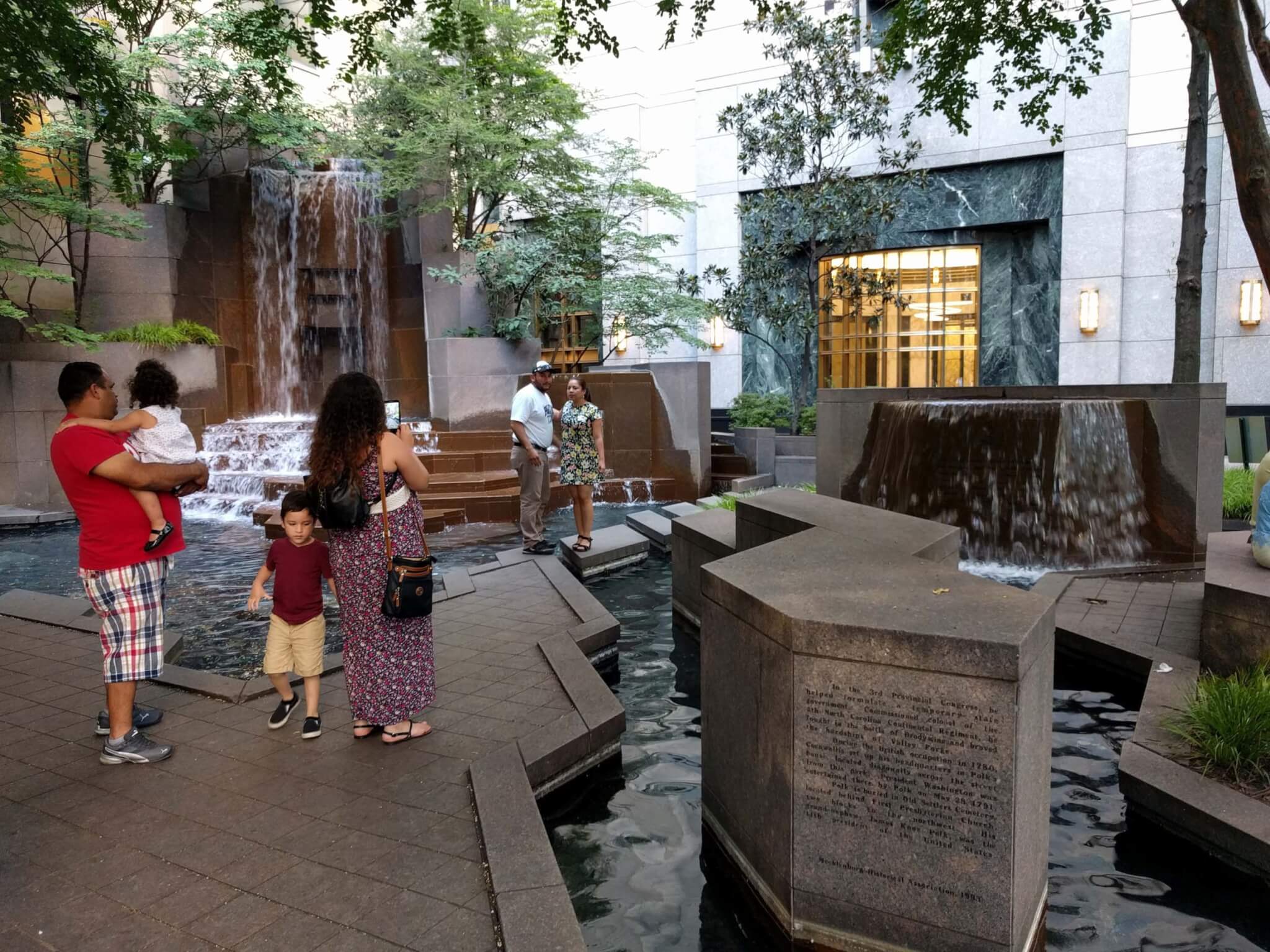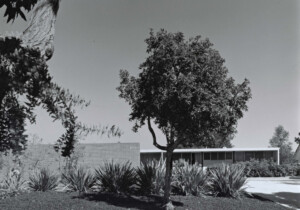Earlier this month the Charlotte City Council voted to demolish Polk Park, an urban respite in Charlotte, North Carolina, designed by Angela Danadjieva in 1991. The Cultural Landscape Foundation (TCLF) has added the park to its Landslide list, a collection of threatened landscapes.
Thomas Polk Park is situated within Independence Square in uptown Charlotte. The site has a long history: Independence Square is named for the Mecklenburg Resolves, a set of resolutions produced here in 1775 that set the groundwork for the Declaration of Independence. Thomas Polk Park gets its name from Thomas Polk, who lived at that location. It also marks the intersection of an indigenous peoples’ crossroads and two historic trade routes.
Danadjieva & Koenig Associates, the firm run by Danadjieva and her husband Thomas Koenig, was commissioned in October 1986 to design Polk Park. Danadjieva grew up in Bulgaria; she holds a degree in architecture and worked for a time as a movie set designer. Prior to establishing Danadjieva & Koenig Associates, she worked for Lawrence Halprin at Lawrence Halprin & Associates for nearly a decade on projects like the Ira Keller Fountain Park in Portland, Oregon, and Freeway Park in Seattle. The James River Park System in Richmond, Virginia, and White River State Park in Indianapolis are highlights from the work of Danadjieva & Koenig Associates.
Polk Park, about 15,000 square feet in area, includes 30-foot-tall manmade waterfall and a reflecting pool. Water pours down the cliff- and rock-like construction made from Piedmont red granite. The reddish, brown shade of the waterfall structure and the plantings and greenery interspersed throughout the site camouflage with the nearby tree-lined streetscape and brick pavers.
In its present state the park is a far cry from the place of reprieve it was originally designed to be. Its water features no longer operate, and it suffers from poor lighting, rodents, and a lack of gathering places. As detailed by TCLF in a press release, these issues are all “due to poor or diminished maintenance and poor programming by the city.”

At the recent City Council meeting, at which the council members voted for the park’s demolition, the park’s lack of maintenance and subsequent need for demolition was echoed by Mayor Pro Tem Braxton Winston.
“The Council’s rationale makes no sense. It’s the equivalent of starving a patient of needed medical care, and then blaming the patient for getting sicker,” said TCLF’s President and CEO Charles A. Birnbaum in a statement. “To make matters worse, the city, whose management negligence resulted in the park’s current condition, would be responsible for maintaining the new park.”
In addition to being razed, the vote also authorized the replacement of Polk Park with a new one that would be named after Bank of America executive Hugh McColl. (Bank of America is headquartered in the city, and its main offices are just around the corner from Polk Park.)
TCLF has also called for Polk Park to be listed on the National Register of Historic Places.
TCLF added the park to its Landslide list of at-risk landscapes across the country in 2020, when it focused on landscapes designed by or associated with women. Last year, the listing was organized to coincide with the 200th anniversary of Frederick Law Olmsted, Sr.’s birth, so the organization highlighted imperiled sites designed by the landscape architect and his successors.











